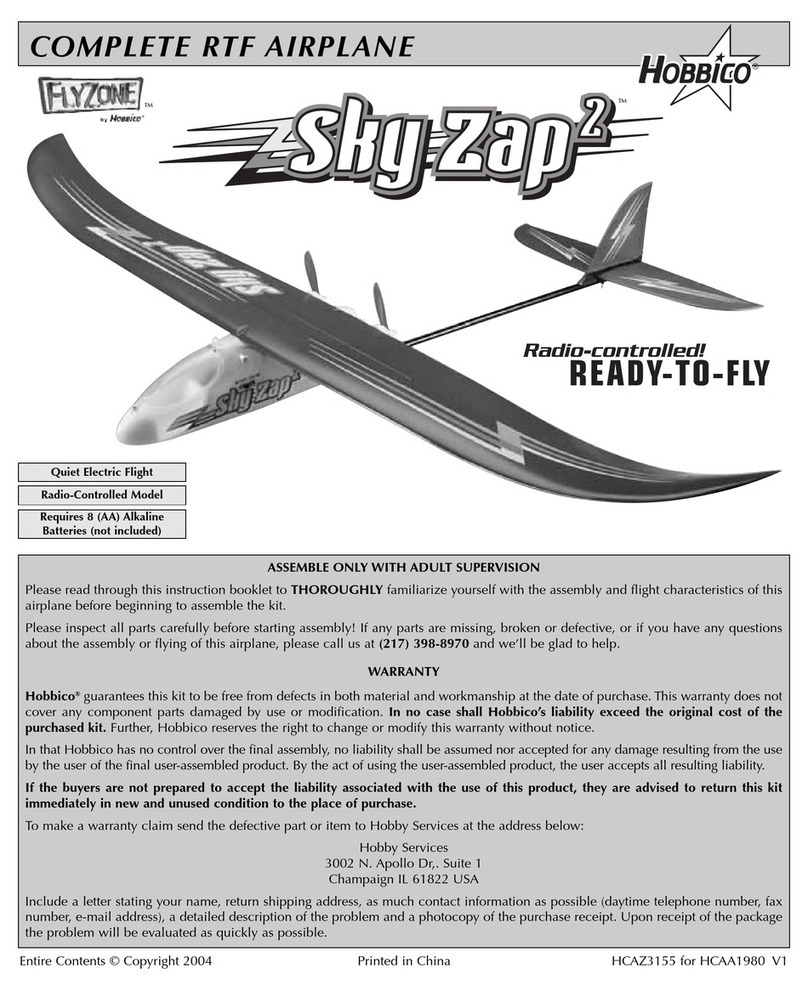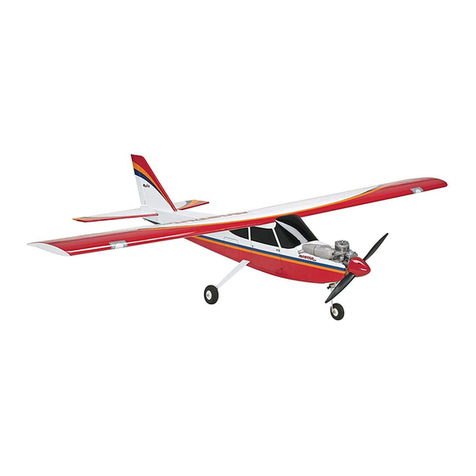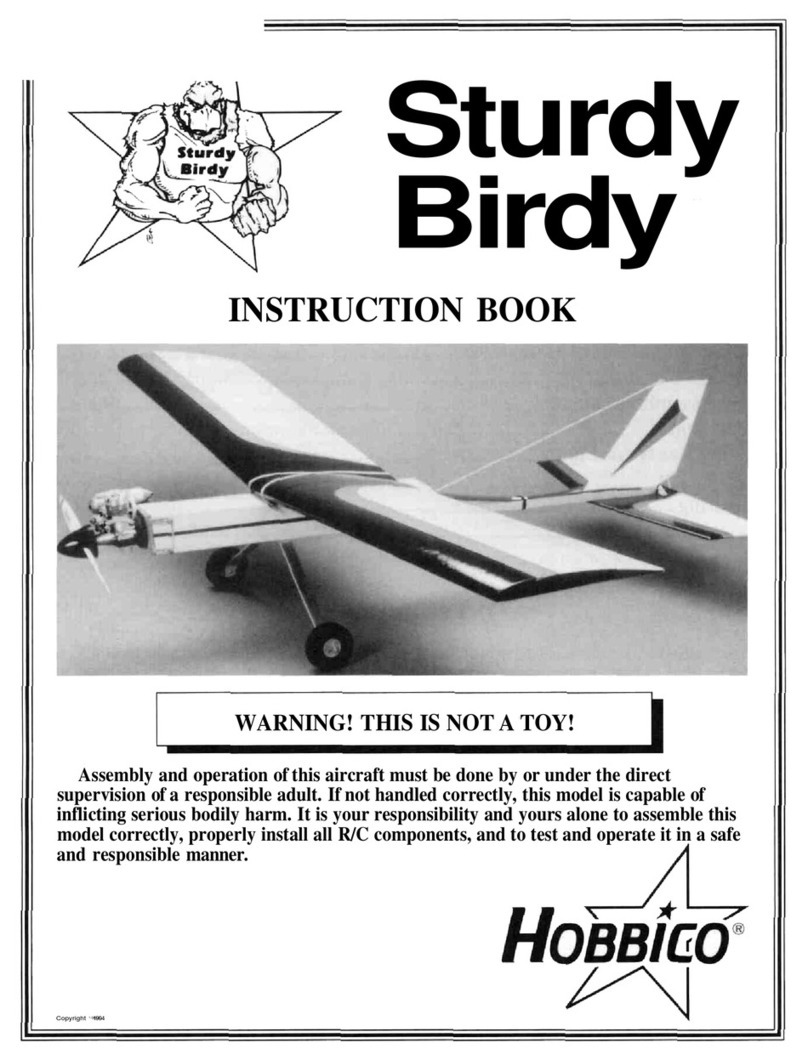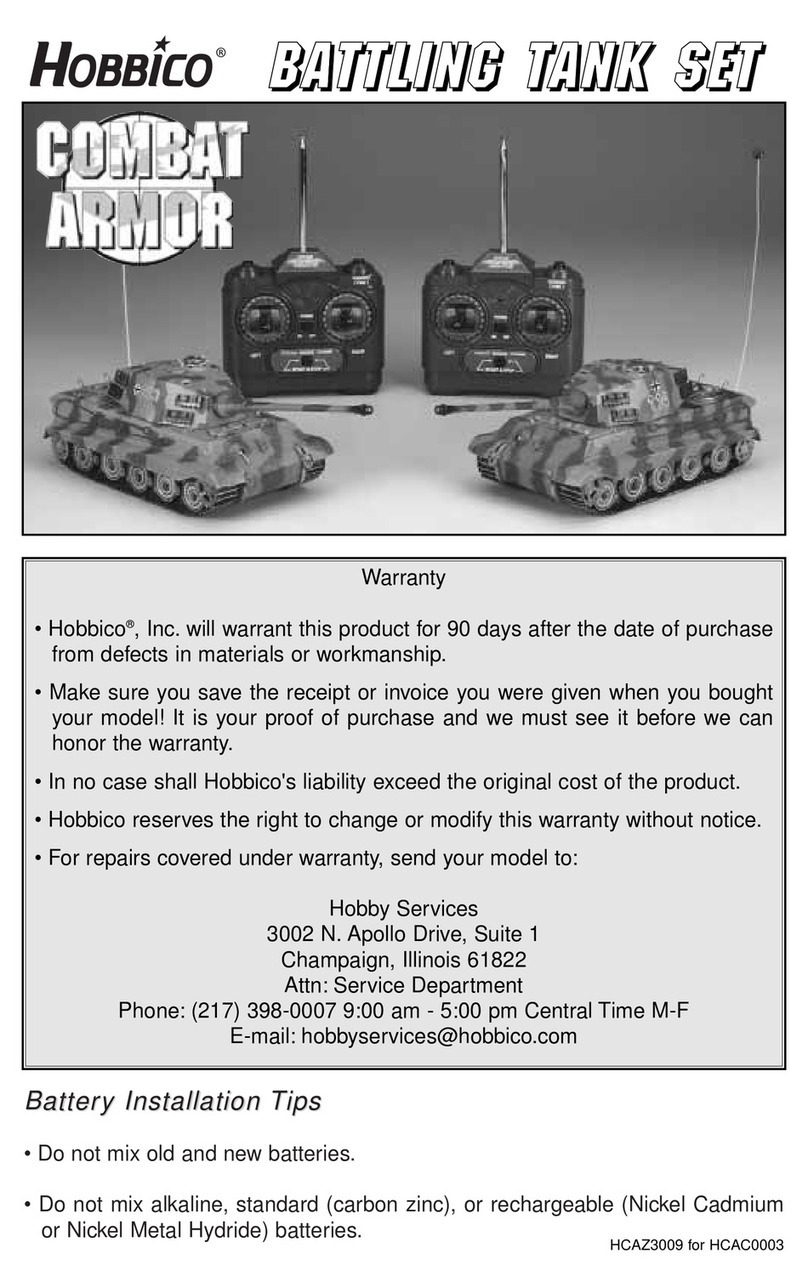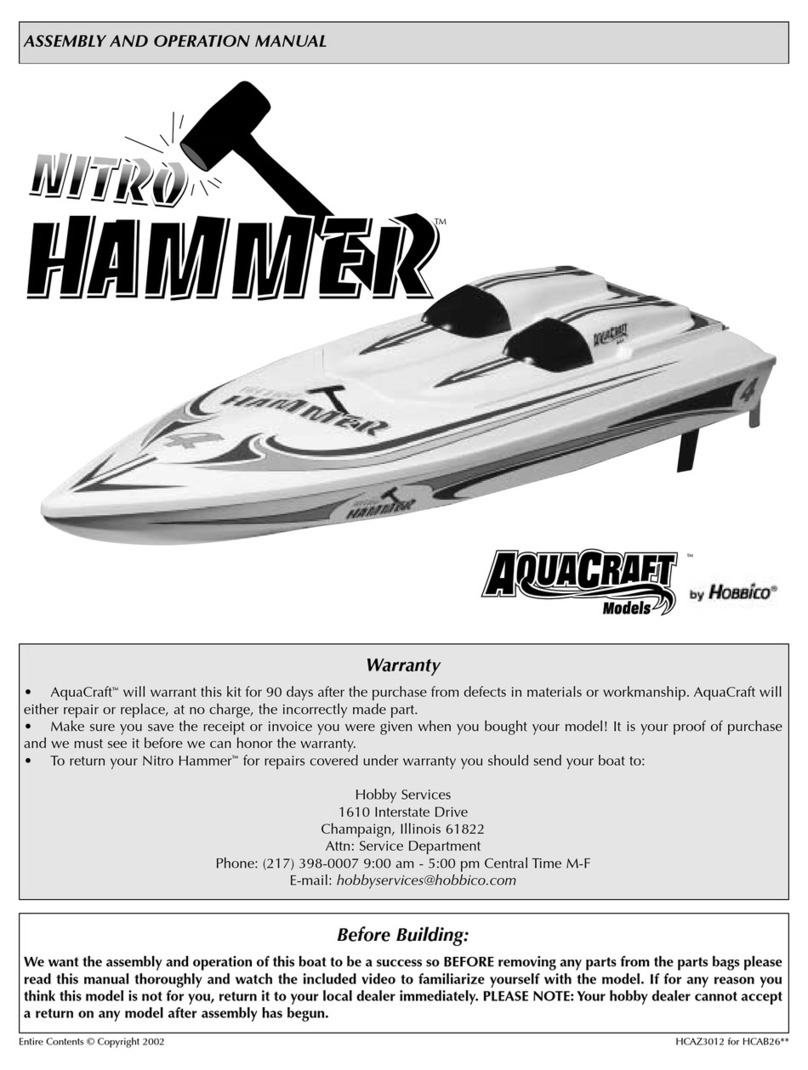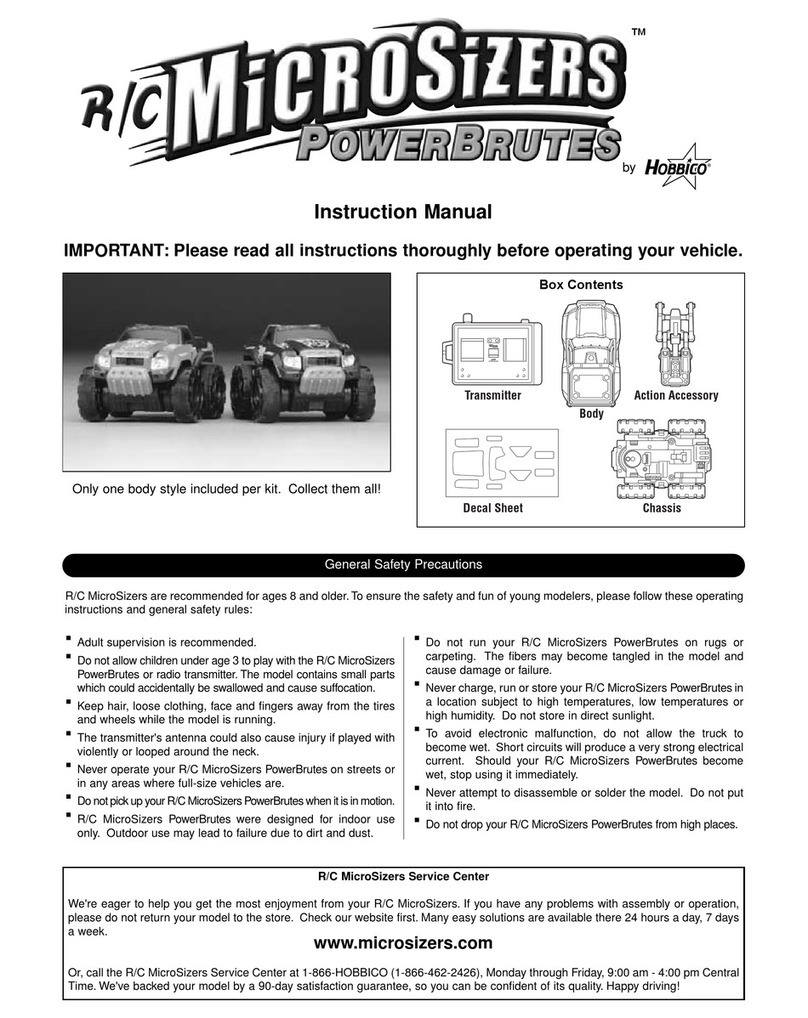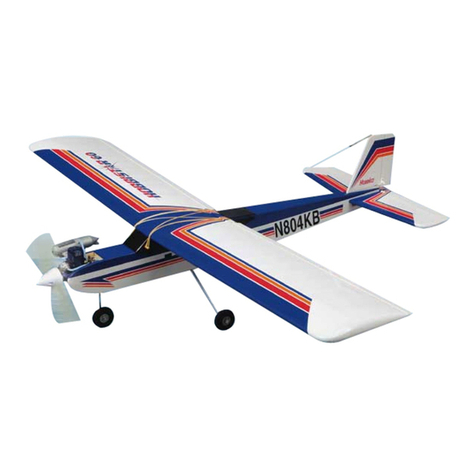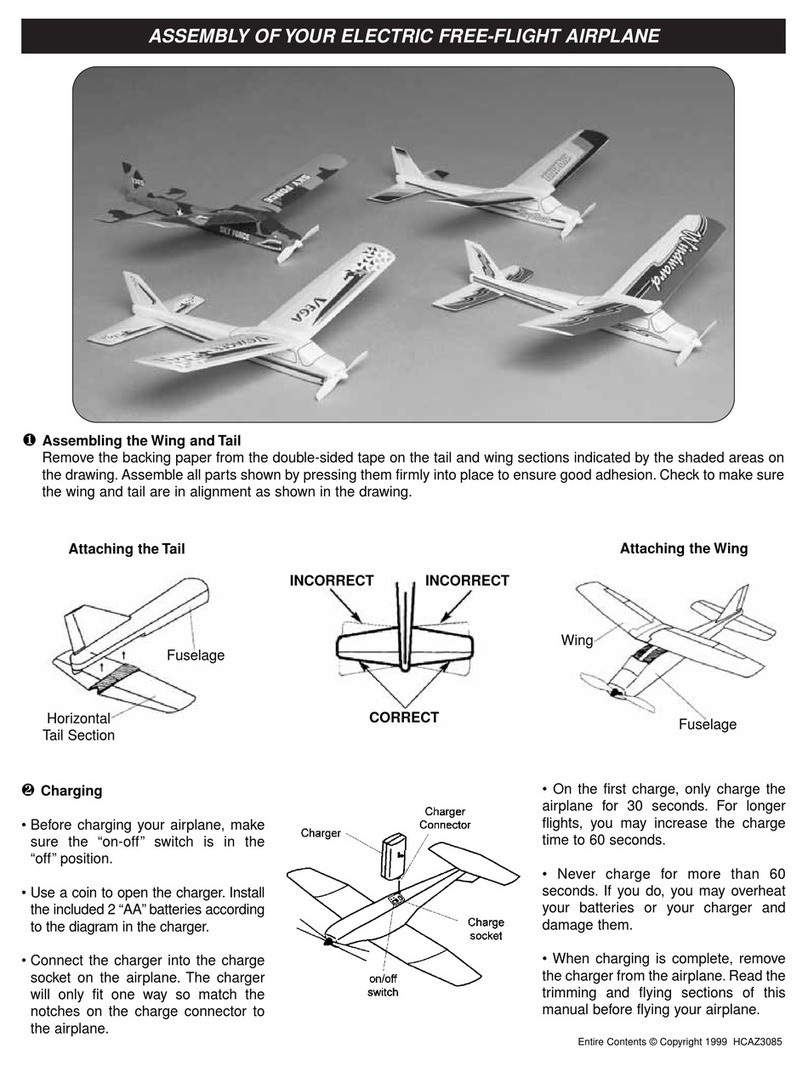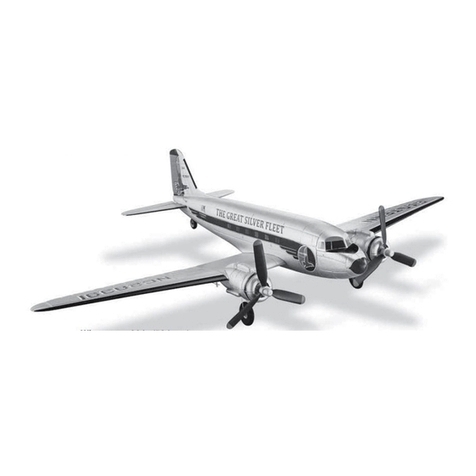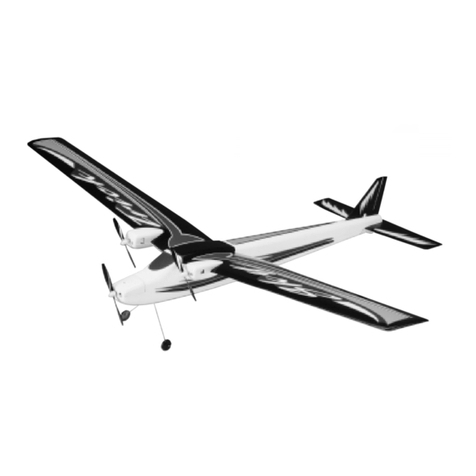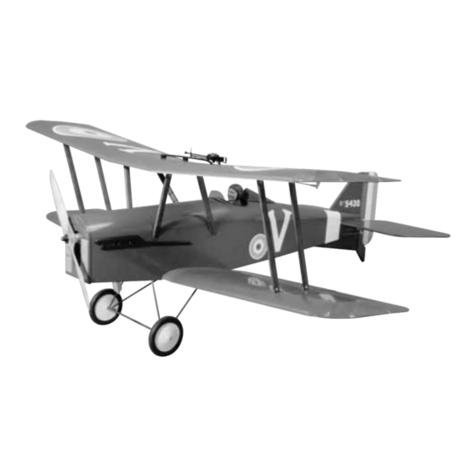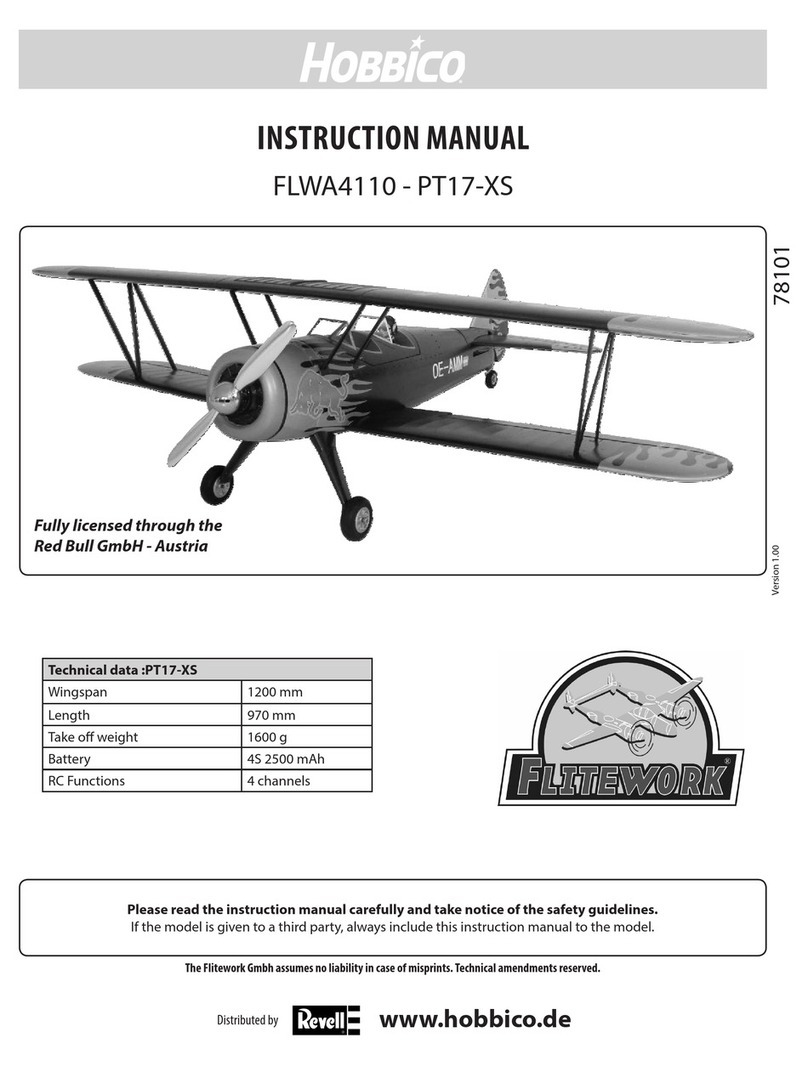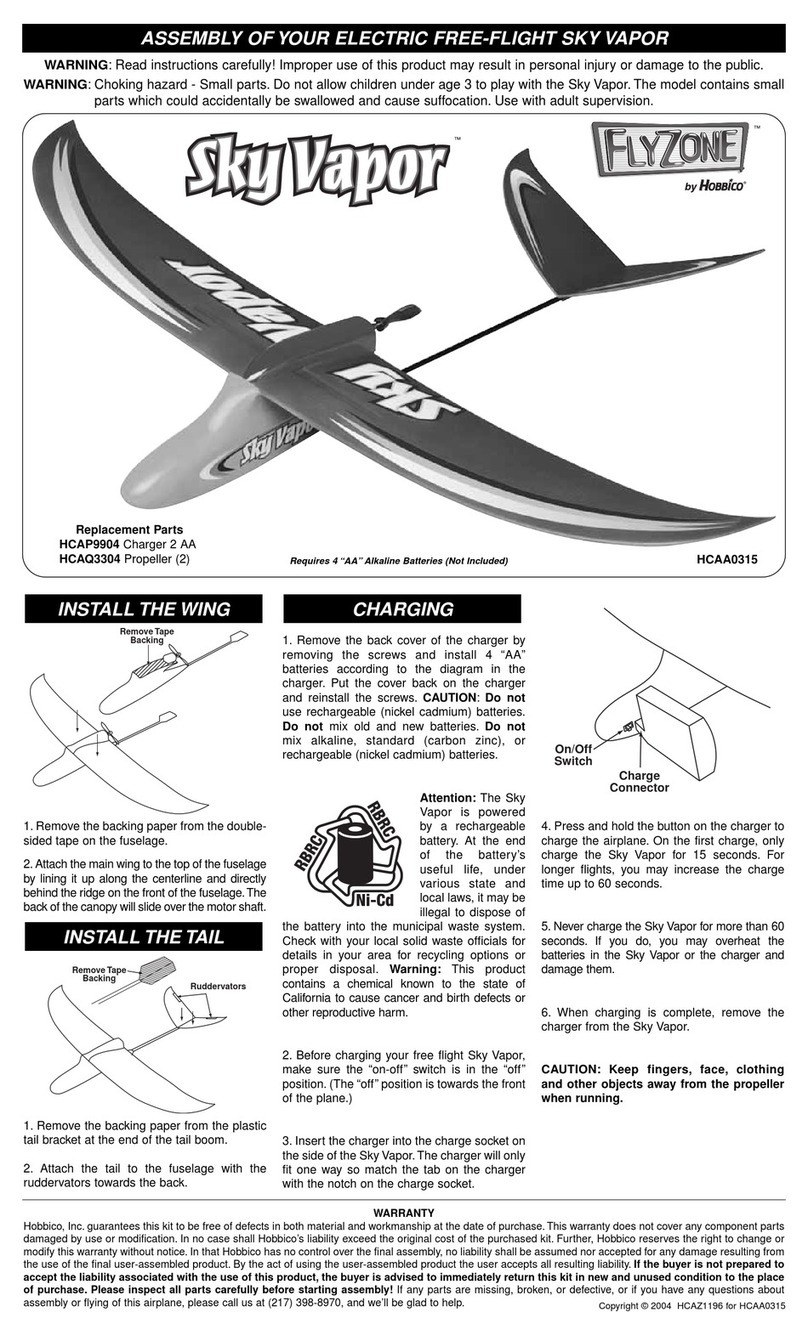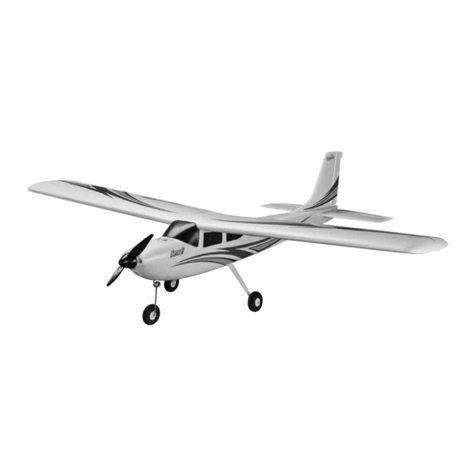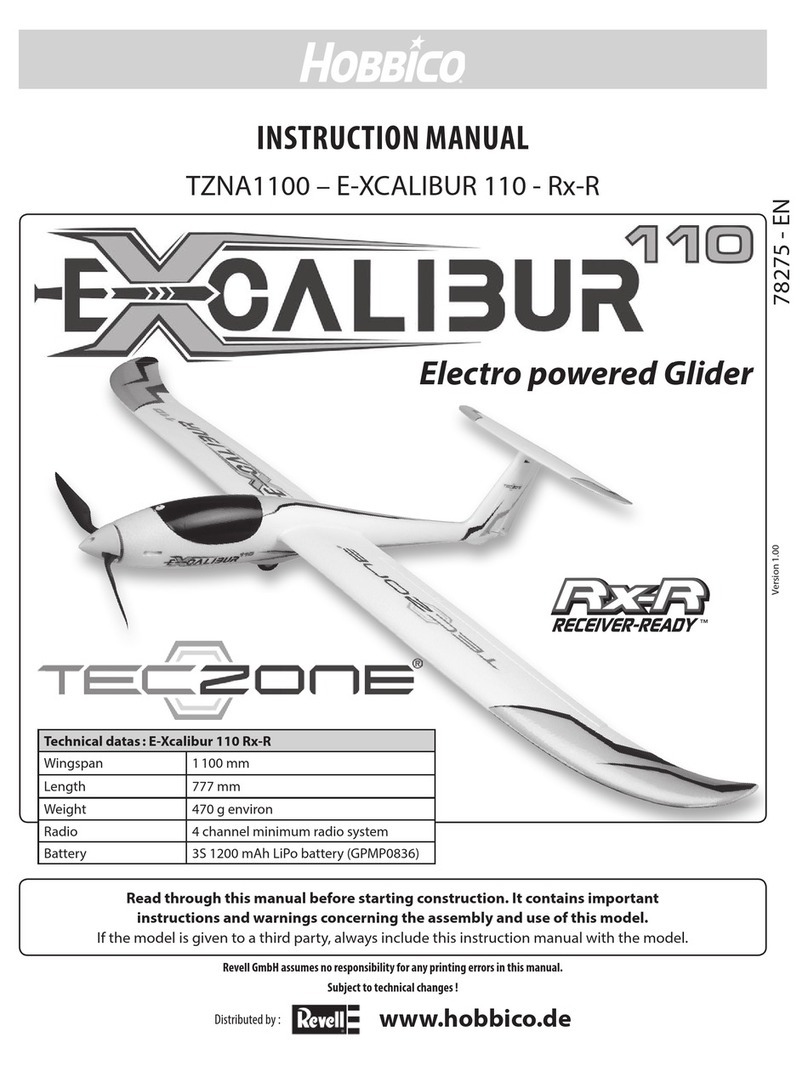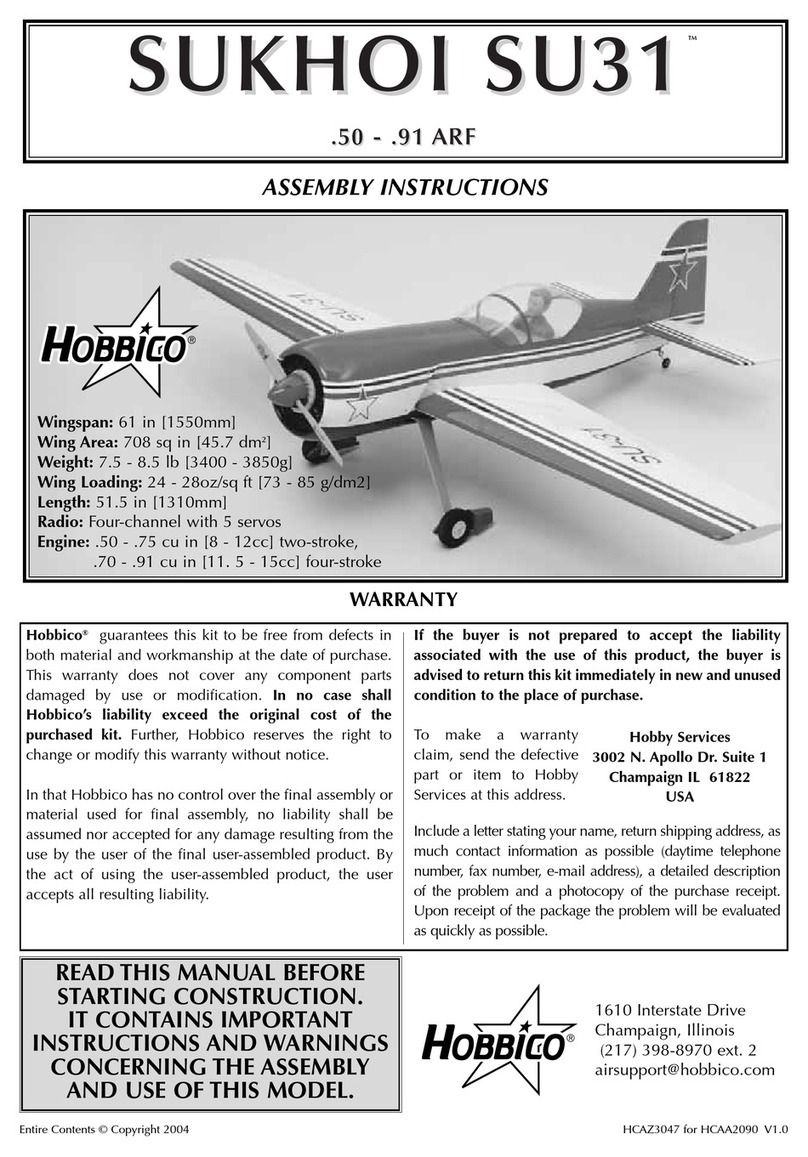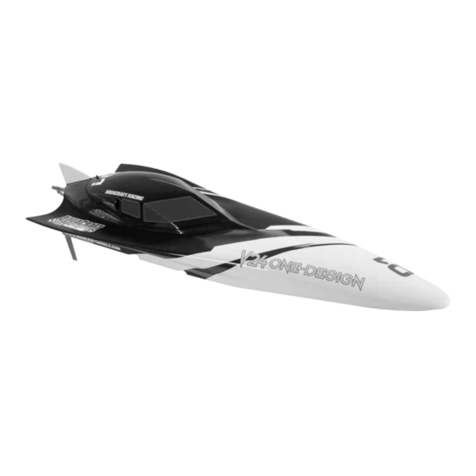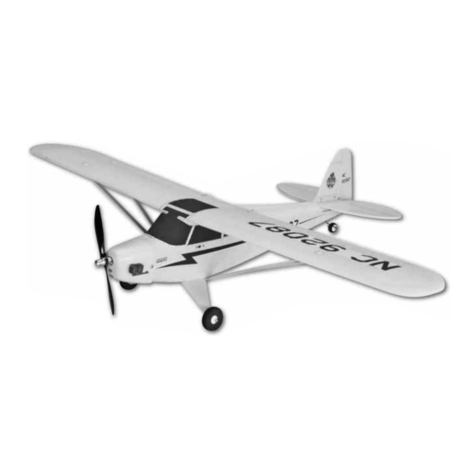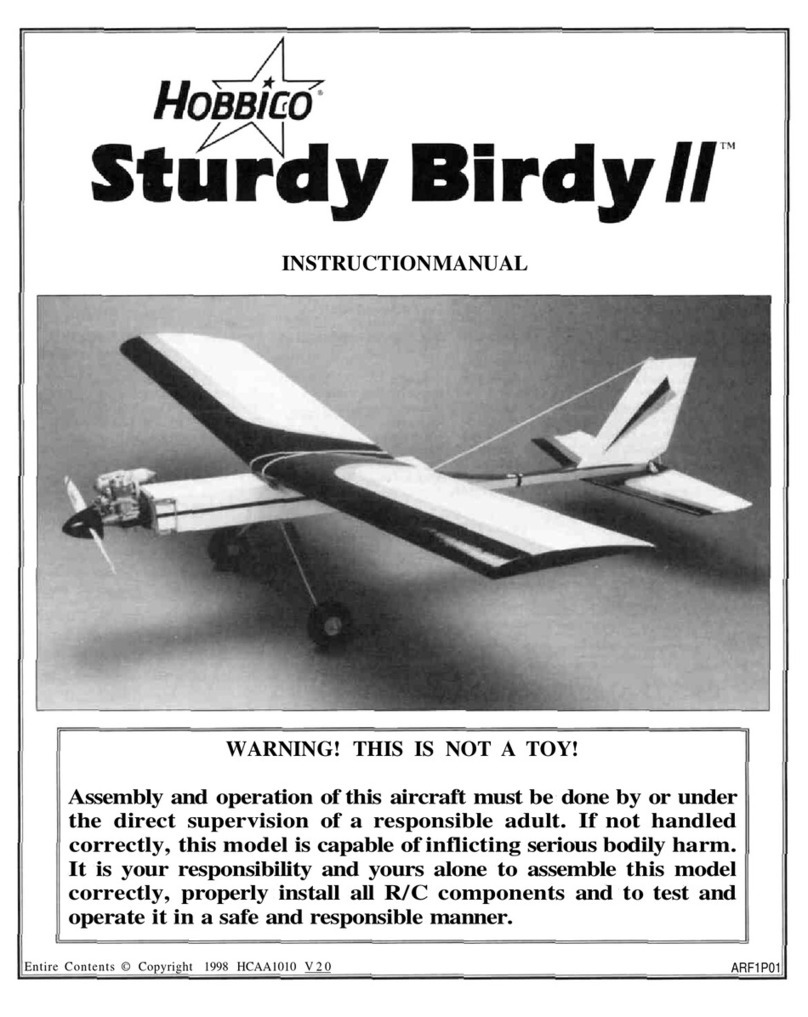IN IRONS: A sail oat is said to e “in irons” when the oat
stalls with its ow pointed directly into the wind with its sails
struggling to fill with air (luffing), keeping the oat from
moving. If you find yourself in this position, simply move the
rudder stick to either side and hold it until the sails catch
some air. You will need to adjust the tension on the sails with
the sail control stick to get the oat moving. Release the
rudder when the ship reaches the desired heading.
LUFFING: When the sails are una le to fill with wind and
egin flapping wildly (like a flag).
TACKING: Sailing towards the wind in a series of maneuvers
diagonal to the wind source. There are asically two tacking
directions. Starboard tack occurs when the wind comes from
star oard and the sail oom hangs over the port side. Port
tack is just the opposite, with the wind coming from port with
the sail oom hanging over the star oard side.
There are varying degrees of tack angle and it is important to
learn when each will e useful and how to get your sail oat
into position, especially when racing. For instance, when
trying to reach a specific position upwind, sailing close
hauled may e the most direct route. Sailing close reached
allows you to get upwind faster, ut is not as direct. In any
case, you asically want the sails to e full of air and just on
the verge of luffing. Here are some terms that descri e
different sailing positions in relation to the wind:
CLOSE-HAULED: You can sail up to a 45° angle against the
wind. Think of it as sailing “close” to the wind with the sails
“hauled” in tight.
CLOSE-REACH: Nearly the same as close-hauled, ut at less
of an angle toward the wind. This allows the oat to reach
greater speed.
BEAM REACH: Sailing with the oat at a out a 90° angle to
the wind.
BROAD REACH: Sailing with the wind coming diagonally
from ehind (a.k.a. sailing large or quartering wind).
PLEASE READ BEF RE RUNNING THE PARADISE SAILB AT:
•NEVER attempt to swim after a stalled or stuck oat! Wait
patiently for the wind currents to return the oat to shore
or use a tennis all attached to the end of a fishing rod to
retrieve it.
• Sailing the Paradise in winds over 15 MPH is not advised.
If you wish to sail in conditions where wind speed is a ove
15 MPH, you may want to install a high-torque sail servo.
• It is dangerous to operate any R/C vehicle at any time that
there is not sufficient light.
• R/C models produce vi rations which will cause screws,
nuts, olts, etc, on your model to ecome loose over
time. It is i portant to ake sure that all hardware is
secure efore operating your model.
•CAUTION: Windy conditions cause rough water that will
affect the performance of your sail oat and increase the
chances of taking on water.
• Your Paradise sail oat may occasionally take on small
amounts of water, especially when running in high
winds, rough water, and when making tight turns. Keep a
roll of paper towels handy and dry out the hull interior
after every run. Check for leaks if you notice excessive
amounts of water in the hull.
• After running, remove the hatch covers and allow the interior
of the oat to dry out completely. If you neglect to do this, it
may result in corrosion of the electronic components.
•IMPORTANT: If, for whatever reason, your oat takes on
a large amount of water causing the electronics to get
wet, you must do the following immediately: Remove the
radio equipment from the oat. Allow the components to
air dry completely efore reassem ling. Reinstall the
components and check for proper operation efore
running the oat in water.
• Total run time of the Paradise sail oat is approximately
45-60 minutes (assuming you egin with new atteries in
the receiver ox). When you notice a decrease in power
or sluggish response, it means the atteries are nearly
drained and it’s time to head for shore. As soon as the
oat reaches shore, turn off the power to the oat and
transmitter (in that order).
LAUNCH PR CEDURE:
1. Turn the power “ON” to the transmitter and oat (in
that order).
2. Gently place the oat in water that is at least 12" deep
and free of o stacles (weeds, rocks, sticks, ducks,
muskrats, etc.). The mast of the Paradise sail oat is NOT
A HANDLE. Do not hold the boat by the ast.
3. Initially you will want to launch the oat downwind and
note if the oat has a tendency to turn right or left. Adjust the
steering trim lever on your transmitter until the oat runs in
a straight line when the steering control stick is at neutral.
4. When finished running, e sure to turn the power “OFF”
to your oat and transmitter (in that order).
5. When you are through sailing for the day, remove the
keel and rudder and allow them to dry.
9
